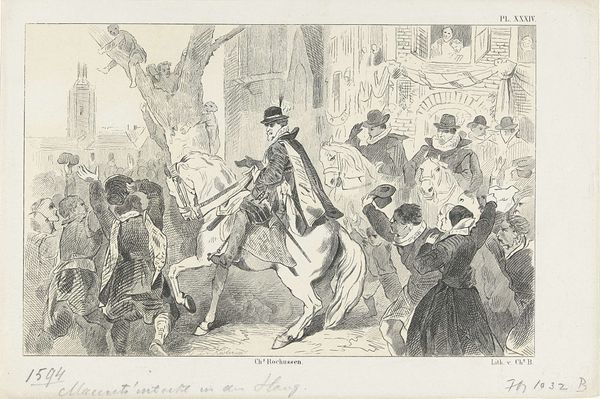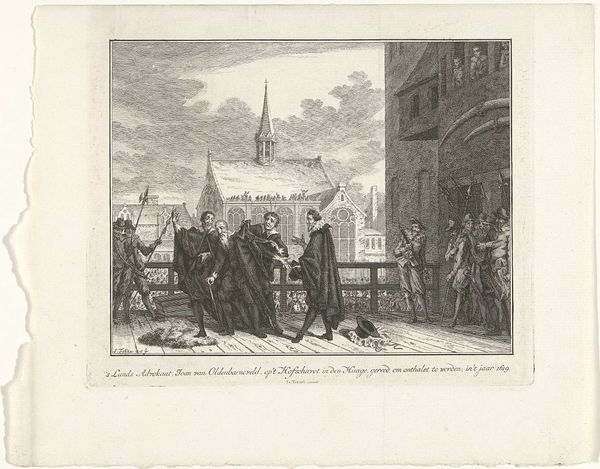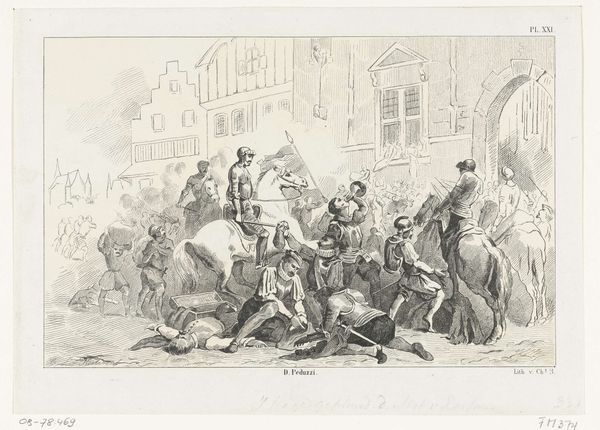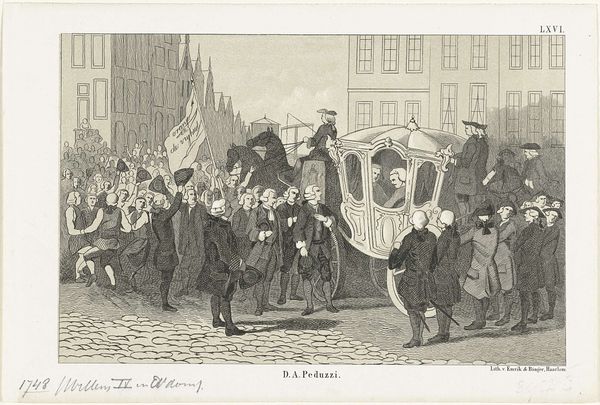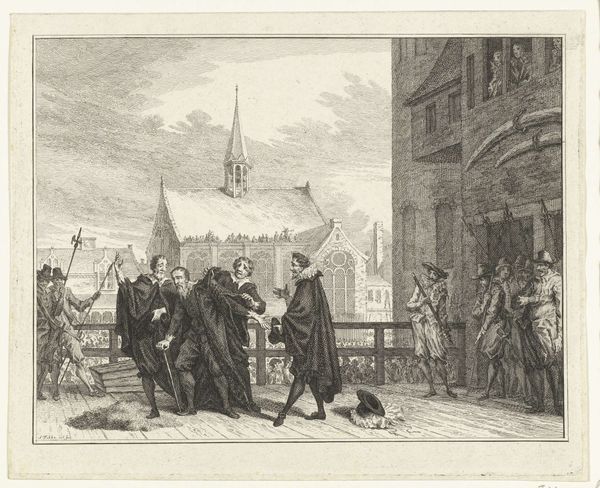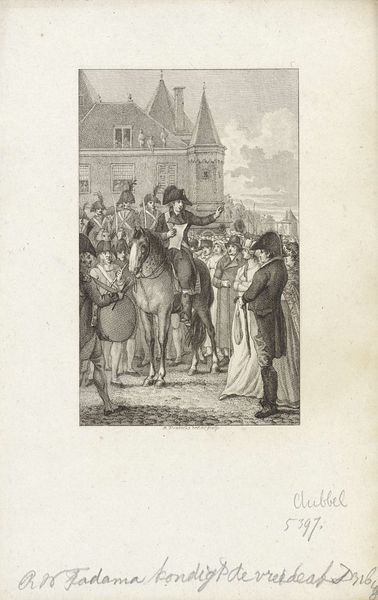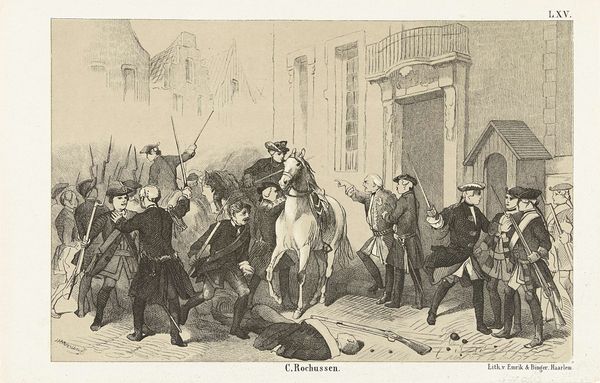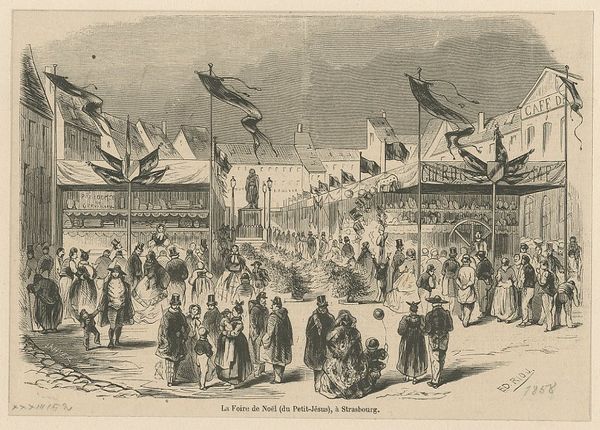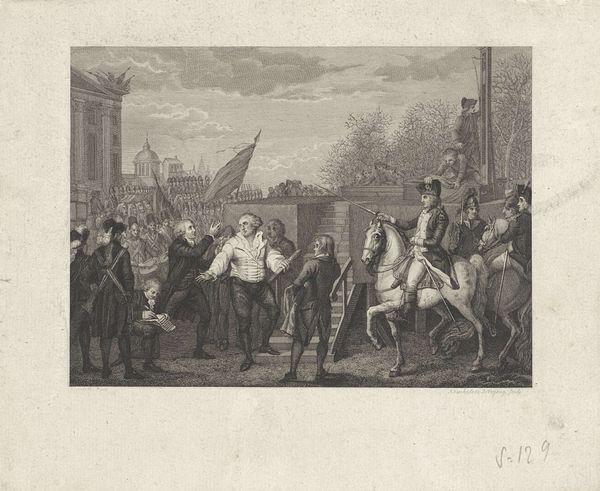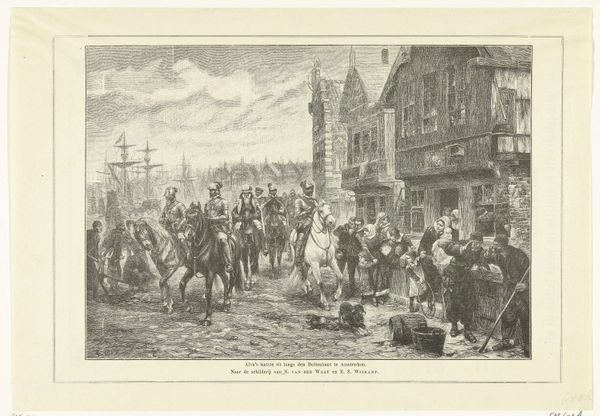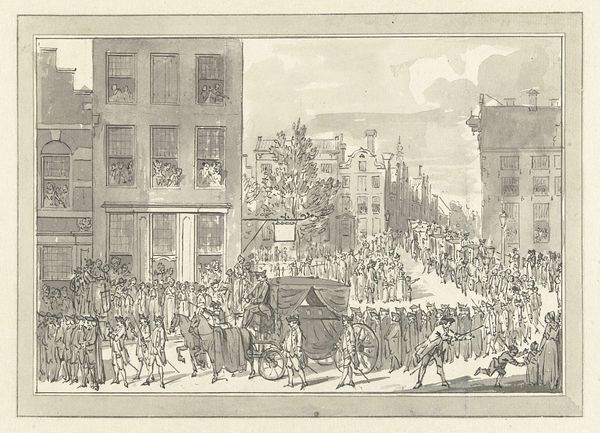
Dimensions: height 162 mm, width 245 mm
Copyright: Rijks Museum: Open Domain
Curator: Looking at this print, "Intocht van Willem III in Torbay, 1688," created between 1853 and 1861 by Jan van der Veen, I'm struck by the energy of the moment. The work captures William of Orange's arrival during a pivotal point in British history. Editor: My first thought? Grey. I mean, obviously, it's an engraving, but everything from the architecture to the billowing flags feels muted, even though the scene depicts a monumental event. Is that intentional, a sort of visual undercurrent suggesting unease? Curator: It's crucial to consider the historical context. William's arrival signified a shift in power dynamics, a turning away from absolutism. Van der Veen, though creating this much later, positions us to examine the legacies of constitutionalism. How these shifts impact identity and social structures is always complicated. Editor: Right, like, victory parades never tell the whole story, do they? Someone's always getting the short end of the stick. Still, there's a grand theatricality here. That trumpet player leading the procession – he looks so puffed up, practically bursting with importance. It's wonderfully human, almost comical amidst all this high-stakes history. Curator: The composition does use that contrast to a potent effect, yes. Consider how the landscape itself frames William’s arrival. Van der Veen highlights both the power structures inherent in the architecture and the collective will of the people who line the streets. These kinds of popular depictions cemented narratives and justified regime changes, but how effectively is always worth questioning. Editor: Questioning's the key. Maybe that pervasive grey *is* the visual embodiment of ambiguity, all those messy negotiations and compromises hidden beneath the surface of a triumphant arrival. Makes you wonder about the stories left untold. And the horse looks a bit bored if I am being frank! Curator: Precisely. It urges us to think critically about representation itself: who is celebrated and who is forgotten in these historical tableaux. Editor: Ultimately, this piece feels like a visual prompt, nudging us to ask, “Whose history are we really seeing?” Curator: Indeed, it is in revisiting these depictions that we come to scrutinize not just the historical event but how narratives get shaped and evolve over time. Editor: I’ll raise a glass to that. History, but with a wink and a nudge. Cheers!
Comments
No comments
Be the first to comment and join the conversation on the ultimate creative platform.

